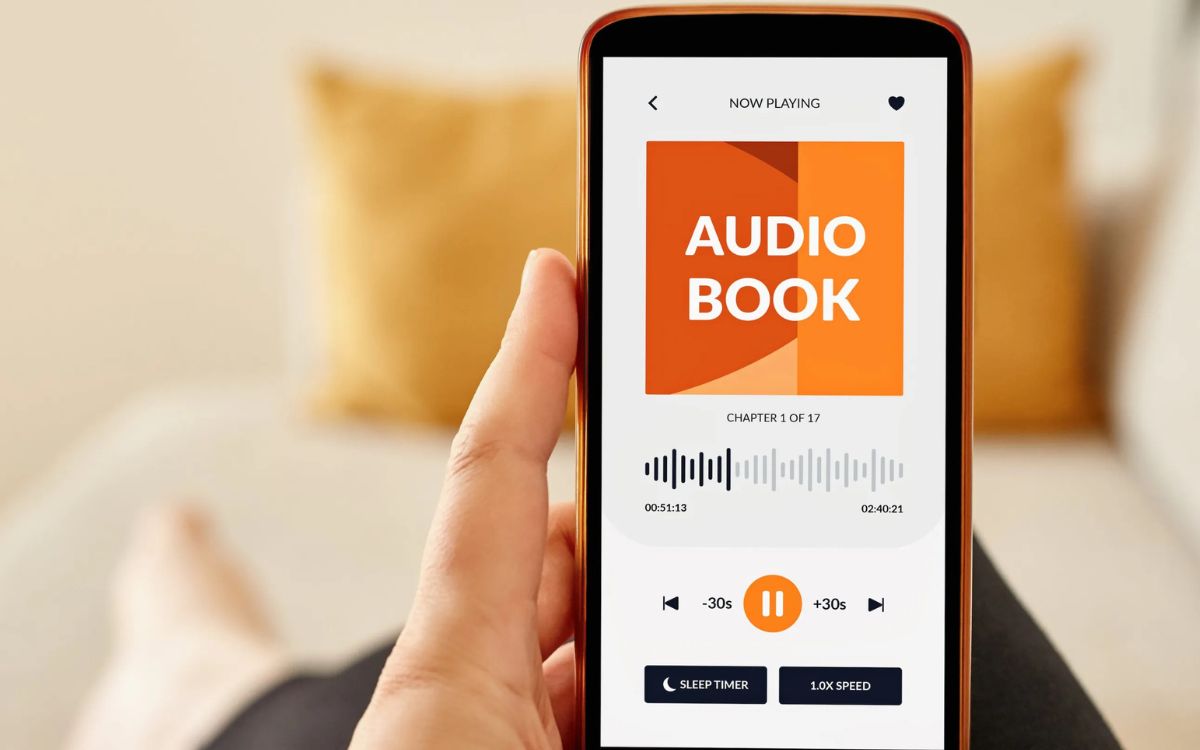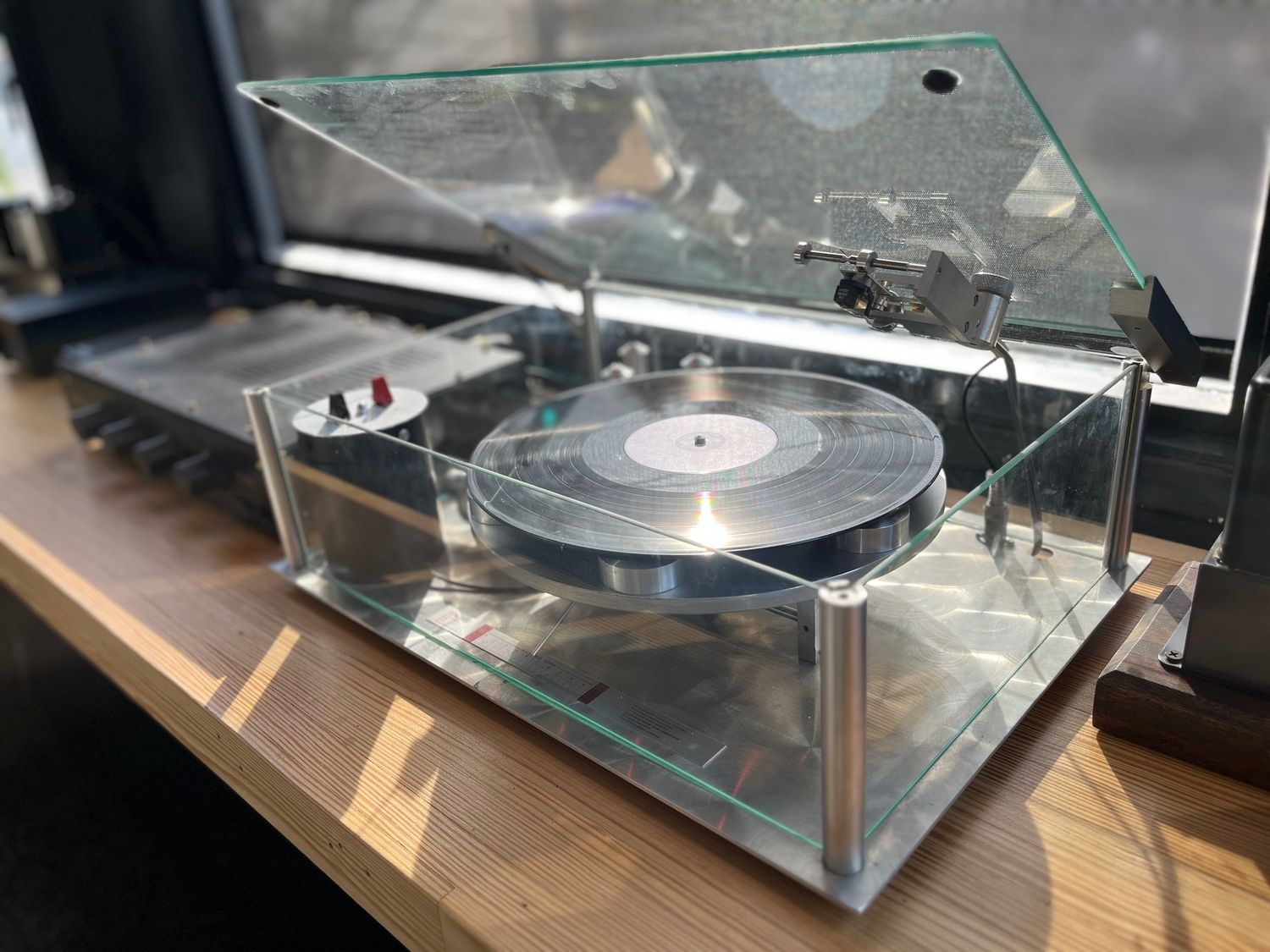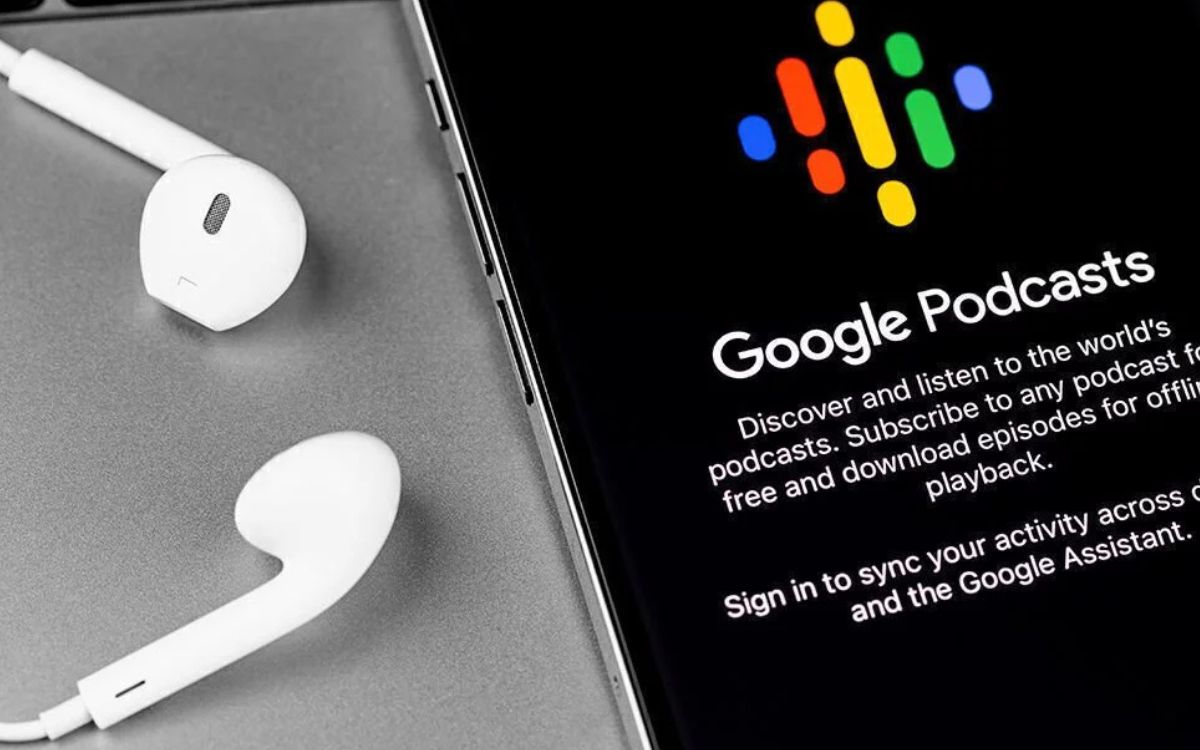Home>Events & Info>Podcast>How To Get A Podcast Transcript


Podcast
How To Get A Podcast Transcript
Published: December 13, 2023
Learn how to get a podcast transcript easily and accurately. Enhance the accessibility and searchability of your podcast with professional podcast transcription services.
(Many of the links in this article redirect to a specific reviewed product. Your purchase of these products through affiliate links helps to generate commission for AudioLover.com, at no extra cost. Learn more)
Table of Contents
- Introduction
- Why You Need a Podcast Transcript
- Methods to Get a Podcast Transcript
- Option 1: Transcribe it Yourself
- Option 2: Hire a Professional Transcription Service
- Option 3: Utilize Automatic Speech Recognition (ASR) Software
- Factors to Consider When Choosing a Transcription Method
- Best Practices for Podcast Transcription
- Conclusion
Introduction
Podcasts have become an incredibly popular medium for sharing information, telling stories, and engaging with audiences. With the rise of podcasting, it’s important to ensure that your content is easily accessible to a wide range of listeners. One way to accomplish this is by providing a podcast transcript.
A podcast transcript is a written version of the spoken content of an episode. It includes all the dialogue, as well as important non-verbal elements like music cues and sound effects. Having a transcript available alongside your podcast episode offers numerous benefits. It improves accessibility for individuals with hearing impairments, expands the reach of your content to non-native English speakers, and enhances the overall user experience for your audience.
Moreover, podcast transcripts play a crucial role in search engine optimization (SEO). Search engines index text-based content more easily than audio files, making transcripts a valuable asset for improving your podcast’s discoverability. By including relevant keywords in your transcript, you can increase the likelihood of your podcast episode appearing in search engine results, driving more traffic to your podcast.
In this article, we will explore various methods for obtaining a podcast transcript, from transcribing it yourself to hiring a professional transcription service or utilizing automatic speech recognition (ASR) software. We will also discuss important factors to consider when choosing a transcription method and provide best practices for podcast transcription.
If you’re a podcast creator looking to improve the accessibility and discoverability of your content, or if you’re a podcast listener seeking an easier way to engage with your favorite episodes, read on to learn how to get a podcast transcript!
Why You Need a Podcast Transcript
There are several compelling reasons why having a podcast transcript is beneficial for both podcast creators and listeners. Let’s explore why you need a podcast transcript:
Accessibility for All: By providing a transcript alongside your podcast episode, you make your content accessible to a wider audience. Individuals with hearing impairments can read along with the transcript and fully engage with your podcast. Additionally, non-native English speakers or those who struggle with understanding spoken language can benefit from having a written version available.
Improved SEO: Adding a podcast transcript significantly helps improve your podcast’s search engine optimization. Search engines have difficulty indexing audio files, but they can easily crawl and index text-based content. By including relevant keywords in your transcript, you increase the chances of your podcast appearing in search engine results, driving more organic traffic to your episode.
Enhanced User Experience: Offering a transcript alongside your podcast episode enhances the overall user experience. Some listeners prefer to skim through content to quickly find specific information or quotes. With a transcript, they can easily scan through the text and locate the desired section. It also allows listeners to better understand and remember the information presented in the episode.
Quote Sharing and Repurposing: A transcript provides an easy way to quote and share specific segments of your podcast on social media or in other content formats. It allows you to repurpose your podcast episodes into blog posts, articles, or even ebooks. Transcripts make it convenient to extract key points, stories, or valuable insights from your podcast and repurpose them across different platforms.
Enhanced Editing and Review Process: Having a written transcript of your podcast can be incredibly helpful during the editing and review process. It allows you to reference specific sections of the episode easily and makes it simpler to spot any errors or inconsistencies. It streamlines the workflow and ensures that your final podcast episode is of the highest quality.
Overall, a podcast transcript is a valuable tool that improves accessibility, boosts discoverability, enhances the user experience, and offers various opportunities for repurposing and editing. Whether you’re a podcast creator or a listener, having a podcast transcript adds immense value to your podcasting journey.
Methods to Get a Podcast Transcript
When it comes to obtaining a podcast transcript, there are several methods you can choose from. Let’s explore three popular options:
- Option 1: Transcribe it Yourself: Transcribing your podcast episodes by yourself is a cost-effective approach, but it can be time-consuming. You can listen to your episode and manually type out the dialogue, ensuring accuracy and capturing any non-verbal elements. This method allows you to have full control over the transcription process and ensures that you maintain the desired tone and style. However, it requires a significant investment of time and effort, especially for longer episodes.
- Option 2: Hire a Professional Transcription Service: If you have the budget and want a high-quality transcript without investing your own time, hiring a professional transcription service is a great choice. Transcription services have experienced transcribers who will accurately transcribe your podcast episode. They can handle various accents, specialized terminology, and non-verbal cues. While this option comes with a cost, it saves you valuable time and ensures a professional and error-free transcript.
- Option 3: Utilize Automatic Speech Recognition (ASR) Software: Automatic Speech Recognition software, such as Google Docs Voice Typing or Trint, uses advanced algorithms to transcribe spoken content. While ASR technology has improved over the years, it may still have some inaccuracies, especially with multiple speakers or challenging audio quality. This option works well for straightforward episodes with clear audio and minimal background noise. While ASR software is convenient, it is recommended to review and edit the transcript for accuracy.
Each method has its own advantages and considerations. The right choice for you depends on factors such as your budget, time availability, the complexity of your podcast content, and your desired level of accuracy. Consider these factors when deciding which method will work best for your podcast transcription needs.
Additionally, keep in mind that for optimal results, it’s important to select a method that aligns with your desired transcription quality and meets the accessibility requirements of your audience. Consider the specific needs of your target audience and the goals you have for your podcast to determine the most suitable transcription method.
In the next section, we will explore the factors to consider when choosing a transcription method, helping you make an informed decision.
Option 1: Transcribe it Yourself
If you have the time and willingness to transcribe your podcast episodes, doing it yourself can be a cost-effective option. Here’s how you can transcribe your podcast:
1. Choose your tools: To transcribe your podcast, you’ll need a good pair of headphones, a computer or a word processing application, and a comfortable space to work in.
2. Listen and type: Play your podcast episode and start typing out the dialogue as you listen. It’s important to pay attention to details, including pauses, laughter, and non-verbal elements like music or sound effects. This ensures an accurate transcript that reflects the nuances of your podcast.
3. Utilize transcription software: Consider using transcription software or an audio player with adjustable speed to help you transcribe more efficiently. These tools allow you to slow down the audio, pause, and rewind easily, making it easier to capture the spoken content accurately.
4. Formatting the transcript: Remember to format your transcript for readability. Use paragraphs or timestamps to separate different speakers or segments. Consider using headings and subheadings to designate different sections of the podcast episode.
5. Proofread and edit: Once you’ve completed the initial transcription, take the time to proofread and edit your transcript. Check for any misspellings, grammar errors, or missing words. Ensure that the transcript reflects the intended meaning and style of your podcast episode.
While transcribing your podcast yourself gives you full control over the process and ensures accuracy, it can be time-consuming, especially for longer episodes. Here are a few tips to make the transcription process more efficient:
– Use a transcription foot pedal: Transcription foot pedals allow you to control the audio playback with your feet, freeing up your hands to type. This can significantly increase your transcription speed.
– Break it into manageable chunks: Transcribing a full episode can be overwhelming. Divide the task into smaller sections or set specific time blocks to focus solely on transcription.
– Consider outsourcing: If you find yourself struggling with time or would rather focus on other aspects of podcasting, you can hire a freelance transcriptionist to transcribe your episodes for you.
Remember, the accuracy and consistency of your transcript are key. Double-check important names, technical terms, or any specialized vocabulary unique to your podcast niche.
Transcribing your podcast episodes yourself can be a rewarding experience, but it requires time, attention to detail, and patience. Evaluate your availability and commitments before deciding if this method is the right fit for you.
Option 2: Hire a Professional Transcription Service
If you’re looking for a high-quality and time-saving option for podcast transcription, hiring a professional transcription service is a great choice. Here’s why you should consider this option:
Accuracy and Quality: Professional transcription services have experienced transcribers who specialize in converting spoken content into accurate written transcripts. They are skilled at capturing nuances, understanding various accents, and deciphering complex vocabulary. With their expertise, you can expect a high-quality transcript that reflects the true essence of your podcast episode.
Saves Time and Effort: Transcribing a podcast episode yourself can be time-consuming, especially if you have limited availability or multiple episodes to transcribe. By outsourcing the task to a professional transcription service, you can save valuable time and focus on other aspects of your podcasting journey, such as content creation and promotion.
Quick Turnaround: Professional transcription services are equipped with dedicated teams who can deliver transcripts within a specified timeframe. With their expertise and efficient processes, you can expect a relatively quick turnaround time for your podcast transcripts. This ensures that you can publish your episodes and share them with your audience without delay.
Specialized Services: Transcription services often provide additional features and options to enhance your podcast transcripts. These can include timestamping, speaker identification, and custom formatting. These features make your transcripts more accessible, organized, and visually appealing, further improving the user experience for your audience.
Quality Control and Confidentiality: Most professional transcription services have strict quality control measures in place to ensure that your transcripts are error-free and adhere to the highest standards. Additionally, they maintain confidentiality and data security, protecting your podcast content. This gives you peace of mind, knowing that your episodes are in reliable hands.
When hiring a professional transcription service, here are a few considerations:
– Research and compare: Take the time to research and compare different transcription services. Look for ones that have positive reviews, a track record of accuracy and reliability, and competitive pricing.
– Submit clear audio: To ensure the best results, provide the transcription service with clear and high-quality audio files. This will make it easier for their transcribers to accurately transcribe your podcast episodes.
– Communicate your requirements: Clearly communicate your formatting preferences, any technical terms or jargon specific to your podcast, and any other specific instructions. This will help the transcription service deliver a transcript that meets your expectations.
– Review and edit: Even though professional transcription services strive for accuracy, it’s a good practice to review the transcript for any errors or inconsistencies before using it for your podcast. Make any necessary edits to ensure the transcript aligns with your desired style, tone, and content.
Investing in a professional transcription service for your podcast ensures a high-quality, accurate, and efficient transcription process. It allows you to focus on creating exceptional content while leaving the transcription to experts in the field.
Option 3: Utilize Automatic Speech Recognition (ASR) Software
Automatic Speech Recognition (ASR) software offers a convenient and cost-effective option for podcast transcription. Here’s why you might consider utilizing ASR software for your podcast:
Speed and Efficiency: ASR software is designed to transcribe spoken content automatically using advanced algorithms. This significantly speeds up the transcription process compared to manual methods. With the click of a button, you can obtain a rough transcript of your podcast episode in a matter of minutes.
Cost-Effective Solution: ASR software is often more affordable compared to hiring a professional transcription service. Many ASR tools offer flexible pricing options, such as pay-as-you-go or subscription-based models, making it an accessible choice for podcasters on a budget.
Convenience: ASR software allows you to transcribe your podcast episodes at your convenience. You can use the software on your own time and schedule, eliminating the need to rely on external services or adhere to specific turnaround times.
Improving Accuracy: Over the years, ASR technology has improved significantly. While it may not offer the same level of accuracy as manual transcription, it can still capture a substantial portion of the spoken content. The accuracy of ASR software depends on factors such as audio quality, speech clarity, and the number of speakers.
Here are a few tips to get the best results with ASR software:
– Ensure clear audio: To improve accuracy, provide clear and high-quality audio files to the ASR software. Minimize background noise and ensure good microphone placement for optimal results.
– Proofread and edit: ASR software may still produce errors and inaccuracies. It’s important to review and edit the transcript for coherence, grammar, and spelling errors. This ensures that the final transcript reflects the intended meaning and style of your podcast episode.
– Consider training the software: Some ASR software allows you to train the model by providing it with additional examples of your voice or specific vocabulary unique to your podcast. This can improve accuracy over time.
While ASR software offers convenience and cost savings, it may not be suitable for every podcast episode. ASR technology can struggle with accents, complex vocabulary, or poor audio quality. For episodes with multiple speakers or specialized content, manual transcription or professional services may be a better option.
It’s worth noting that using ASR software as a starting point and then editing the transcript manually can be a practical approach. This combines the speed of automated transcription with the accuracy and quality control of human review.
Evaluate the specific needs of your podcast and the resources available to determine whether ASR software is the right choice for your transcription requirements. With proper editing and review, ASR software can be a valuable tool in obtaining transcripts for your podcast episodes.
Factors to Consider When Choosing a Transcription Method
When selecting a transcription method for your podcast, there are several important factors to consider. These factors will help you determine the most suitable option based on your specific needs and circumstances. Here are key considerations to keep in mind:
1. Accuracy: Accuracy is crucial when it comes to transcription. Consider the level of accuracy required for your podcast. Manual transcriptions and professional transcription services generally guarantee higher accuracy compared to ASR software, which may struggle with accents, multiple speakers, or specialized content.
2. Time: Evaluate the time constraints you have for obtaining the transcript. Transcribing episodes by yourself can be time-consuming, while professional transcription services generally offer faster turnaround times. ASR software provides the quickest results but may require additional editing for accuracy.
3. Budget: Consider your budget for podcast transcription. Manual transcription requires only your effort but can be time-intensive. Professional transcription services offer accuracy and convenience, albeit with a cost. ASR software is affordable but may require additional manual editing.
4. Audio Quality: The quality of your audio recordings can influence the transcription method you choose. If you have clear and high-quality recordings, any method will work well. However, if your audio quality is poor or contains background noise, you may opt for manual transcription or professional services, which can better handle such challenges.
5. Content Complexity: Assess the complexity of your podcast content. If your episodes include technical terms, industry jargon, or specialized vocabulary, professional transcription services are recommended as they have transcribers experienced in handling such content. ASR software may struggle to accurately transcribe highly technical or unfamiliar terms.
6. Confidentiality: Consider the sensitivity of your podcast content. If confidentiality is a concern, using ASR software locally on your computer may be the best option, as it eliminates the need to share your audio files with external services.
7. Desired Level of Control: Determine the level of control you want over the transcription process. Transcribing by yourself provides complete control but requires significant time and effort. Professional transcription services offer expertise and convenience, while ASR software offers a more automated approach.
8. Accessibility Features: If accessibility is a priority, ensure that your chosen method provides features like speaker identification, timestamping, and custom formatting to make your transcripts more accessible to a wider audience.
By carefully assessing these factors, you can choose the transcription method that aligns with your needs, resources, and the specific requirements of your podcast. It may be helpful to prioritize these factors based on their importance to you and experiment with different methods to find the most suitable one for your unique circumstances.
Best Practices for Podcast Transcription
Transcribing your podcast episodes is not just about converting spoken words into written text; it’s about creating an accurate, readable, and engaging transcript. Here are some best practices to follow when transcribing your podcast:
1. Use correct spelling and grammar: Ensure that your transcript is error-free by using proper spelling and grammar. Pay attention to punctuation, capitalization, and sentence structure to maintain readability. Proofread your transcript to catch any typos or grammatical mistakes.
2. Include non-verbal elements: Transcribe not just the dialogue but also important non-verbal elements such as background music, sound effects, and laughter. Use descriptive terms to capture the atmosphere and tone of the podcast episode.
3. Identify speakers: Clearly indicate different speakers in your transcript. Use speaker labels or initials to make it easy for readers to follow along, especially in episodes with multiple participants or interviews.
4. Use timestamps: Timestamps help listeners and readers to locate specific sections of your podcast episode. Include timestamps at regular intervals or at important moments to allow for easy navigation within the transcript.
5. Format for readability: Structure your transcript in a reader-friendly format. Use paragraphs, headings, and subheadings to organize different sections. Choose a legible font and size, and consider using bold or italics to emphasize certain words or phrases.
6. Capture context: Provide context within the transcript to help readers understand any visual elements or actions that are being discussed. Describe the scene or provide necessary background information to add depth and clarity to the transcript.
7. Proofread and edit: Once you’ve transcribed your podcast episode, take the time to proofread and edit the transcript. Correct any errors, improve readability, and ensure that the transcript accurately represents the content and message conveyed in the episode.
8. Consider accessibility: Make your podcast transcript accessible to a wider audience. Include features such as alt text for images or descriptions of visual content mentioned in the episode. Consider adding captions for videos or descriptive text for graphs and charts.
9. Optimize for SEO: Incorporate relevant keywords naturally within the transcript to enhance search engine optimization. This can improve the discoverability of your podcast by making it more visible in search engine results.
10. Provide clear links or references: If you mention external resources or provide recommendations during your podcast episode, include clear references or clickable links within the transcript. This allows readers to easily access the referred content.
Remember, a well-crafted transcript enhances the overall user experience and improves the accessibility and searchability of your podcast content. Take the time to follow these best practices to create high-quality transcripts that resonate with your audience and add value to your podcasting efforts.
Conclusion
Transcribing your podcast episodes can greatly enhance the accessibility, discoverability, and overall user experience of your content. Whether you choose to transcribe it yourself, hire a professional transcription service, or utilize automatic speech recognition (ASR) software, there are options available to suit your specific needs and resources.
A podcast transcript opens up your content to a wider audience, including those with hearing impairments or language barriers. It also plays a pivotal role in search engine optimization, improving the chances of your podcast episode being discovered through keyword inclusion. Transcripts also allow for easy quote sharing, repurposing, and editing of your podcast content.
When selecting a transcription method, consider factors such as accuracy, time, budget, audio quality, and content complexity. Manual transcription allows for complete control but can be time-consuming, while professional transcription services offer accuracy, convenience, and fast turnaround times. ASR software provides a cost-effective and convenient option, but may require additional editing for accuracy.
To ensure the best transcripts, follow best practices such as using correct spelling and grammar, including non-verbal elements, identifying speakers, formatting for readability, and providing context. Proofreading, editing, and considering accessibility are crucial steps in delivering high-quality transcripts.
In conclusion, by including a podcast transcript alongside your episodes, you expand the reach of your content, improve its accessibility, and enhance the user experience. Choose the transcription method that aligns with your goals and resources, and consistently implement best practices to create transcripts that are informative, engaging, and valuable to your audience.











